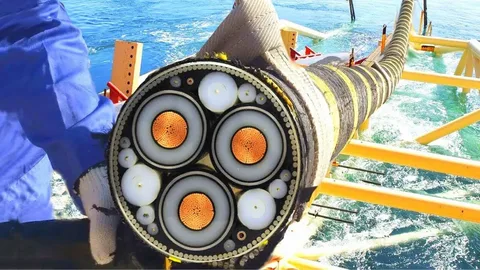| Introduction The global submarine power cable market is emerging as a key enabler of offshore renewable energy and intercontinental power transmission. These cables, laid on the seabed to carry high-voltage electricity, are vital for connecting offshore wind farms, oil and gas platforms, and islands to the mainland grid. Growing investments in offshore wind energy, cross-border interconnections, and energy security initiatives are significantly driving market expansion. As nations aim for decarbonization, submarine cables are becoming indispensable to integrate offshore renewable power into onshore grids. The increasing deployment of long-distance, high-capacity cables indicates a promising outlook for the submarine power cable industry. Understanding the Market The submarine power cable market has gained momentum with the global shift toward renewable and sustainable energy systems. It can be categorized into HVAC (High Voltage Alternating Current) and HVDC (High Voltage Direct Current) cables. HVAC systems are widely used for shorter connections, while HVDC cables dominate long-distance, high-capacity transmission projects. Europe currently leads the market, driven by the rapid development of offshore wind farms in the North Sea and Baltic regions. Meanwhile, Asia Pacific, particularly China, Japan, and South Korea, is expanding its offshore grid networks to meet renewable targets. The market is further strengthened by advancements in insulation materials, such as cross-linked polyethylene (XLPE), which enhance power transmission efficiency and reduce maintenance. Technological Innovations Technological advancements are shaping the submarine power cable market by improving reliability, lifespan, and transmission capacity. Innovations in cable design, such as three-core configurations, lightweight armoring, and high-strength conductors, have enabled deeper and longer installations. HVDC technology, particularly Voltage Source Converter (VSC)-based systems, is revolutionizing subsea power transfer by minimizing losses over long distances. Furthermore, new monitoring systems using fiber-optic sensors and digital twin models are enhancing fault detection and predictive maintenance. Manufacturers are also focusing on developing environment-friendly cable-laying processes and recyclable materials to minimize marine ecological impacts. The adoption of robotics and remotely operated vehicles (ROVs) has streamlined underwater installation and inspection, reducing project timelines and costs. Market Growth and Future Outlook The submarine power cable market is projected to witness robust growth over the next decade, primarily fueled by offshore wind expansion and cross-border interconnectors. According to industry estimates, offshore wind capacity could surpass 250 GW globally by 2035, creating immense demand for reliable subsea connections. Europe’s North Sea projects, Asia’s floating wind developments, and emerging U.S. offshore wind farms are key growth catalysts. Additionally, intercontinental grid projects connecting regions such as the UK–Norway (North Sea Link) and Egypt–Greece are setting benchmarks for large-scale HVDC installations. Governments are promoting grid modernization and renewable integration through favorable policies and funding. With rising focus on energy security and stable power supply, submarine power cables will play a critical role in global energy transition. Challenges and Opportunities Despite its growth potential, the submarine power cable market faces several challenges. High installation and maintenance costs, technical complexity, and environmental concerns are major barriers. Cable failures due to fishing activities, anchoring, or geological movements can cause substantial power disruptions and financial losses. However, these challenges also open opportunities for innovation. The growing demand for reliable grid infrastructure creates space for advanced monitoring, protective coatings, and improved installation techniques. Moreover, governments’ increasing emphasis on offshore renewable integration and intercontinental energy trade enhances investment prospects. The rise of smart subsea networks and digitalization will further optimize system efficiency and operational safety. Conclusion The submarine power cable market stands at the center of the global energy transformation. As renewable energy expands offshore and nations seek interconnected power networks, the need for efficient, durable, and high-capacity subsea cables continues to grow. Technological advancements, supportive policies, and sustainability goals are likely to strengthen market development. Although installation challenges persist, the increasing scale of offshore wind projects and cross-border transmission will ensure steady growth. Over the coming years, submarine power cables will remain fundamental to achieving a resilient, low-carbon global energy infrastructure. |
